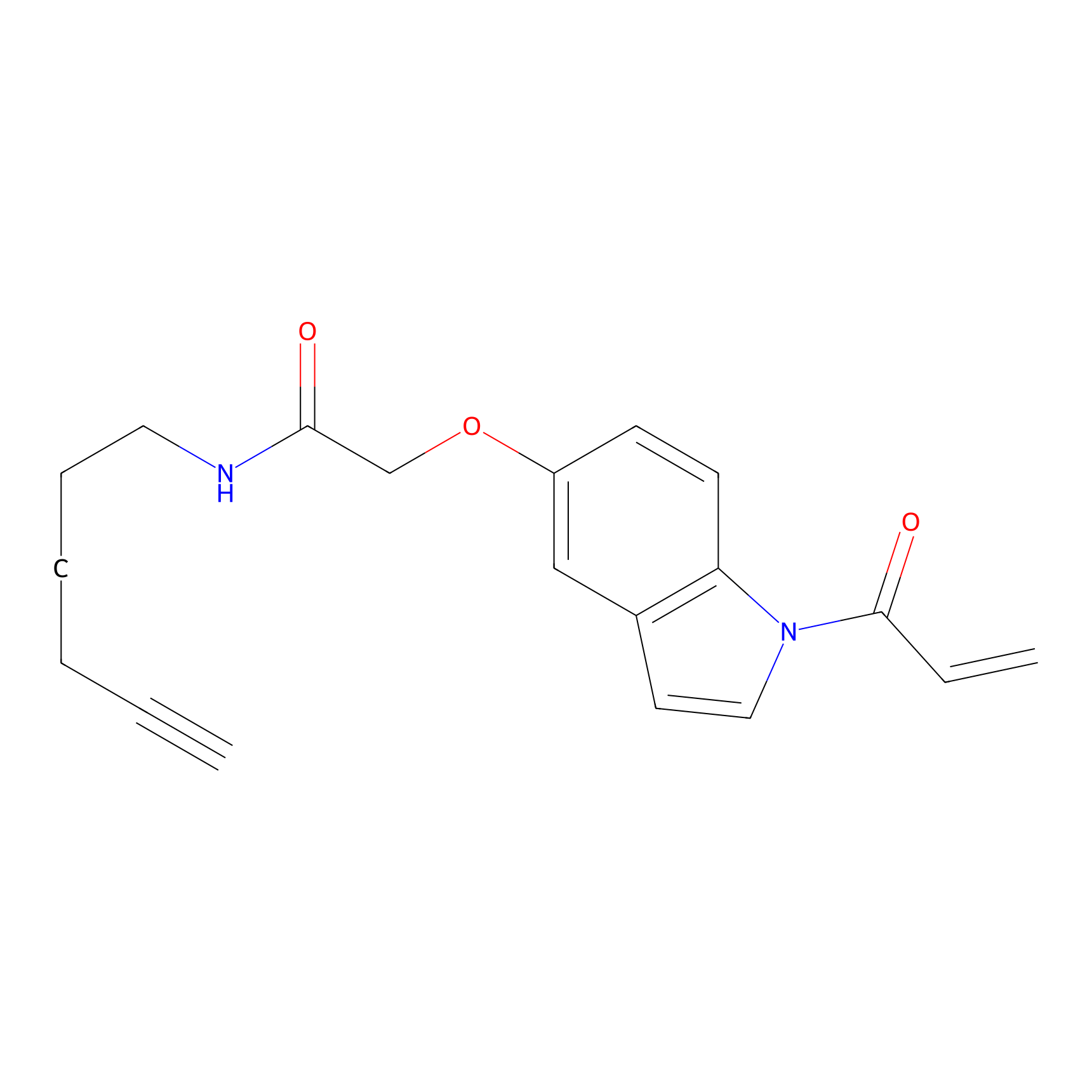Details of the Target
General Information of Target
| Target ID | LDTP09408 | |||||
|---|---|---|---|---|---|---|
| Target Name | Mitogen-activated protein kinase 15 (MAPK15) | |||||
| Gene Name | MAPK15 | |||||
| Gene ID | 225689 | |||||
| Synonyms |
ERK7; ERK8; Mitogen-activated protein kinase 15; MAP kinase 15; MAPK 15; EC 2.7.11.24; Extracellular signal-regulated kinase 7; ERK-7; Extracellular signal-regulated kinase 8; ERK-8 |
|||||
| 3D Structure | ||||||
| Sequence |
MCTVVDPRIVRRYLLRRQLGQGAYGIVWKAVDRRTGEVVAIKKIFDAFRDKTDAQRTFRE
ITLLQEFGDHPNIISLLDVIRAENDRDIYLVFEFMDTDLNAVIRKGGLLQDVHVRSIFYQ LLRATRFLHSGHVVHRDQKPSNVLLDANCTVKLCDFGLARSLGDLPEGPEDQAVTEYVAT RWYRAPEVLLSSHRYTLGVDMWSLGCILGEMLRGRPLFPGTSTLHQLELILETIPPPSEE DLLALGSGCRASVLHQLGSRPRQTLDALLPPDTSPEALDLLRRLLVFAPDKRLSATQALQ HPYVQRFHCPSDEWAREADVRPRAHEGVQLSVPEYRSRVYQMILECGGSSGTSREKGPEG VSPSQAHLHKPRADPQLPSRTPVQGPRPRPQSSPGHDPAEHESPRAAKNVPRQNSAPLLQ TALLGNGERPPGAKEAPPLTLSLVKPSGRGAAPSLTSQAAAQVANQALIRGDWNRGGGVR VASVQQVPPRLPPEARPGRRMFSTSALQGAQGGARALLGGYSQAYGTVCHSALGHLPLLE GHHV |
|||||
| Target Bioclass |
Enzyme
|
|||||
| Family |
Protein kinase superfamily, CMGC Ser/Thr protein kinase family, MAP kinase subfamily
|
|||||
| Subcellular location |
Cytoplasm, cytoskeleton, cilium basal body
|
|||||
| Function |
Atypical MAPK protein that regulates several process such as autophagy, ciliogenesis, protein trafficking/secretion and genome integrity, in a kinase activity-dependent manner. Controls both, basal and starvation-induced autophagy throught its interaction with GABARAP, MAP1LC3B and GABARAPL1 leading to autophagosome formation, SQSTM1 degradation and reduced MAP1LC3B inhibitory phosphorylation. Regulates primary cilium formation and the localization of ciliary proteins involved in cilium structure, transport, and signaling. Prevents the relocation of the sugar-adding enzymes from the Golgi to the endoplasmic reticulum, thereby restricting the production of sugar-coated proteins. Upon amino-acid starvation, mediates transitional endoplasmic reticulum site disassembly and inhibition of secretion. Binds to chromatin leading to MAPK15 activation and interaction with PCNA, that which protects genomic integrity by inhibiting MDM2-mediated degradation of PCNA. Regulates DA transporter (DAT) activity and protein expression via activation of RhoA. In response to H(2)O(2) treatment phosphorylates ELAVL1, thus preventing it from binding to the PDCD4 3'UTR and rendering the PDCD4 mRNA accessible to miR-21 and leading to its degradation and loss of protein expression. Also functions in a kinase activity-independent manner as a negative regulator of growth. Phosphorylates in vitro FOS and MBP. During oocyte maturation, plays a key role in the microtubule organization and meiotic cell cycle progression in oocytes, fertilized eggs, and early embryos. Interacts with ESRRA promoting its re-localization from the nucleus to the cytoplasm and then prevents its transcriptional activity.
|
|||||
| Uniprot ID | ||||||
| Ensemble ID | ||||||
| HGNC ID | ||||||
| ChEMBL ID | ||||||
Target Site Mutations in Different Cell Lines
Probe(s) Labeling This Target
ABPP Probe
| Probe name | Structure | Binding Site(Ratio) | Interaction ID | Ref | |
|---|---|---|---|---|---|
|
NAIA_5 Probe Info |
 |
C154(20.00) | LDD2227 | [1] | |
Competitor(s) Related to This Target
